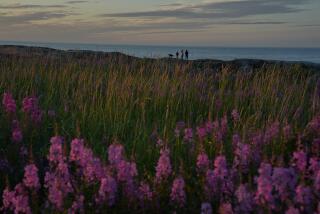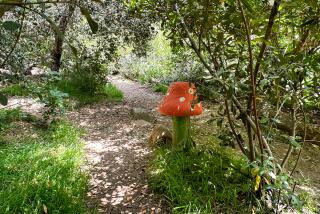Canada Wages Long-Running Battle on Old-Growth Forest Management : Canada: Northern sawmill operators and southern city dwellers and environmentalists square off over the preservation of old-growth forests.
TEMAGAMI, Ontario — Mutterings can be heard in this sawmill town about the “southerners” and how the long-running battle over the region’s forests could have been solved long ago without their interference.
The talk is about city dwellers from urbanized southern Ontario, from such places as Toronto, where environmentalists have taken on the fight to preserve Temagami’s old-growth red and white pine forests. The bulk of Canada’s population lives in southern areas not far from the U.S. border.
This is Canada’s Near North, a term used to differentiate it from the more vast and less populated barren stretches leading to the Arctic farther north.
In addition to environmentalists and other “southerners,” the battle involves sawmill operators and forest product companies eager to preserve precedents of access to lumber supplies, and an Indian tribe trying to assert a land claim.
Canadians have long debated how to develop their resource-rich, rugged northern areas. Since the 19th Century, Temagami has been a wilderness destination for Canadians and Americans looking for a remote escape.
The diverging interests have resulted in a standoff over Temagami’s majestic forests, defying solution at a time when environmental issues have surged to the top of public concern nationally and internationally.
Brian Back of the Temagami Wilderness Society said he hopes that the chord of concern that the Brazilian rain forest’s plight has struck in Canada can be translated into intensified interest in troubles closer to home.
As the environmentalists tell it, the logging industry supported by the provincial government is threatening the largest virgin pine forest left in Ontario.
“There is no comparable, accessible wilderness that we know about,” Back said.
Tourist brochures for the region note that it is within a day’s drive of not only the eastern Canadian cities of Toronto and Montreal but also of Buffalo, Cleveland, Detroit and other American cities.
Confrontations over forests also have taken place on Canada’s Pacific Coast, most recently in the Carmanah and Stein valleys of British Columbia. But no dispute in the eastern part of the country has been as intractable or received as much attention as that in Temagami.
The Temagami Wilderness Society has attracted 14,000 members.
Brian Moulder, district planner for the Ontario Ministry of Natural Resources that oversees land use for public lands, insisted that enough balance has been given to all interests and enough set aside for wilderness reserve.
“There’s been harvesting (of trees) in this district for over 100 years,” he said. “There must be economic advantage, or they would have quit a long time ago.”
Environmentalists respond that the ante was raised by the mechanization of the logging industry in the 1950s that required ever larger sawmills to be fed by clear-cutting of trees instead of selective harvesting.
Canada is the world’s largest exporter of forest products, sending 22% of all forest products traded on international markets. There are about 300 towns across the country where the industry serves as a mainstay.
Temagami is a nondescript town of about 1,100 people on Canada’s north-south Highway 11, about a five-hour drive north of Toronto. On first glance it would seem an unlikely spot as the centerpiece for an environmental battle, but the area around it includes not only the forests but also a vast system of interlocking waterways ideal for canoeing.
The fight specifically is over whether logging roads can be extended to allow clear-cutting in previously inaccessible areas.
A local Algonquin Indian group, the Teme-Augama Anishnabai, filed a claim in 1973 for 4,000 square miles of land. The claim was rejected a decade later but development in the interim was halted on public lands.
Appeals until recently kept any logging road from being extended and allowed time for the protests to gather support and symbolic value.
“I don’t like how the land is being treated,” Michael Paul, an Indian who performed the tobacco ceremony at a recent blockade of a logging road, said at his home on Bear Island.
The Indians rejected a $35-million settlement offer from the government in 1986 but recently resumed talks.
The Ontario government gave the go-ahead for work on two logging road extensions to proceed after the last appeal was rejected in provincial court last spring.
Those who favor allowing more clear-cutting say its effects can be compared to those of a forest fire, clearing out growth that no longer is productive and setting the stage for new trees to grow.
They also say a steady supply of timber can ensure that at least some sawmill jobs will remain in Temagami, if not the 150 that existed when the mill could operate at its peak.
The local William Milne & Sons mill has been in receivership since last December, but a scaled-down version is expected to resume operations soon.
The wilderness advocates, however, argue that the old growth, with trees dating back generations, cannot be replaced. They say the new forest that would spring up in its wake would not harbor the greater diversity of natural life now existing, especially in the fragile northern environment.
“There’s never been an adequate evaluation of what’s there,” said Don Huff, environmental director of the Federation of Ontario Naturalists. “There’s no place else that still has this combination of things still relatively intact.”
More to Read
Sign up for Essential California
The most important California stories and recommendations in your inbox every morning.
You may occasionally receive promotional content from the Los Angeles Times.










